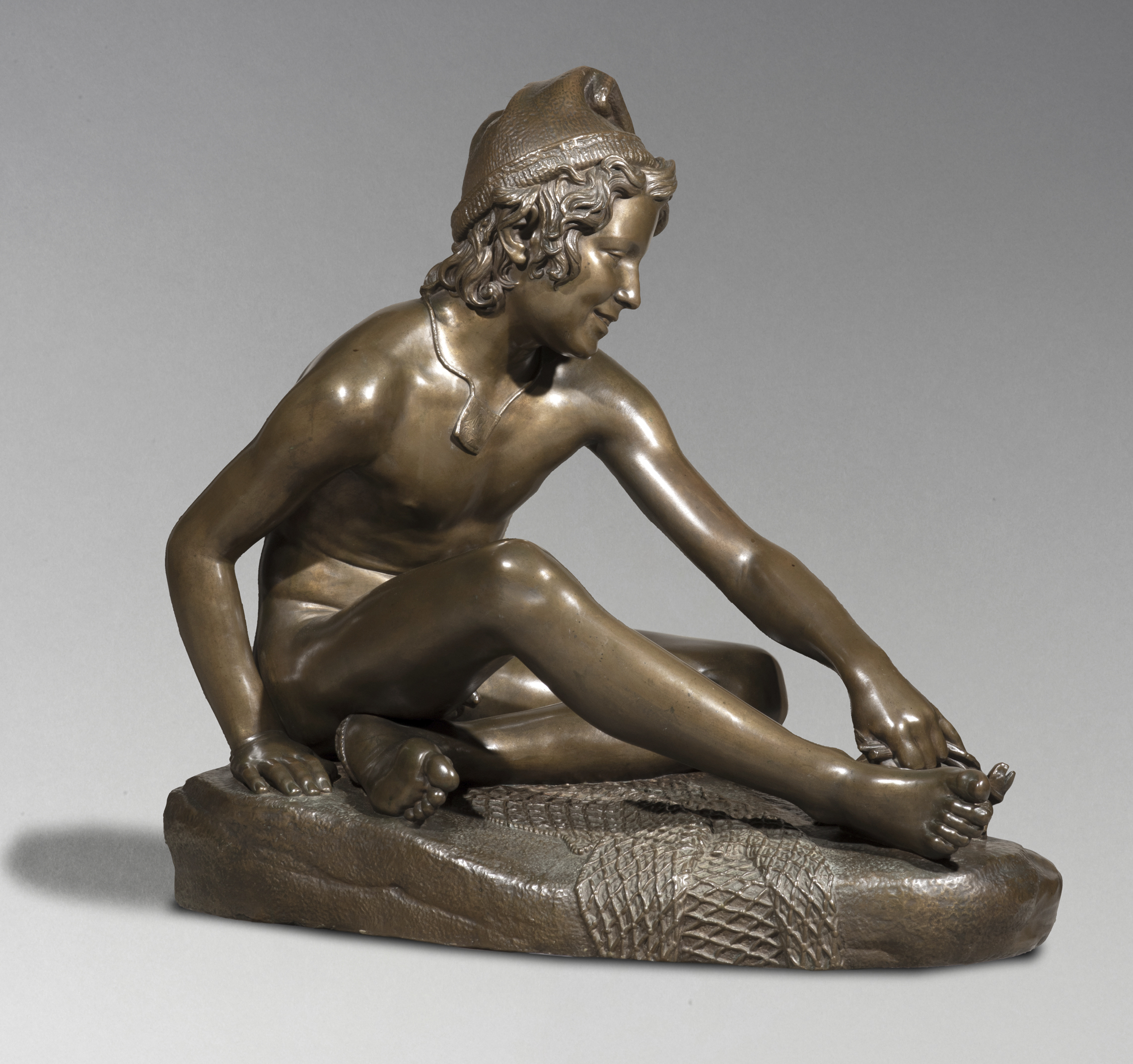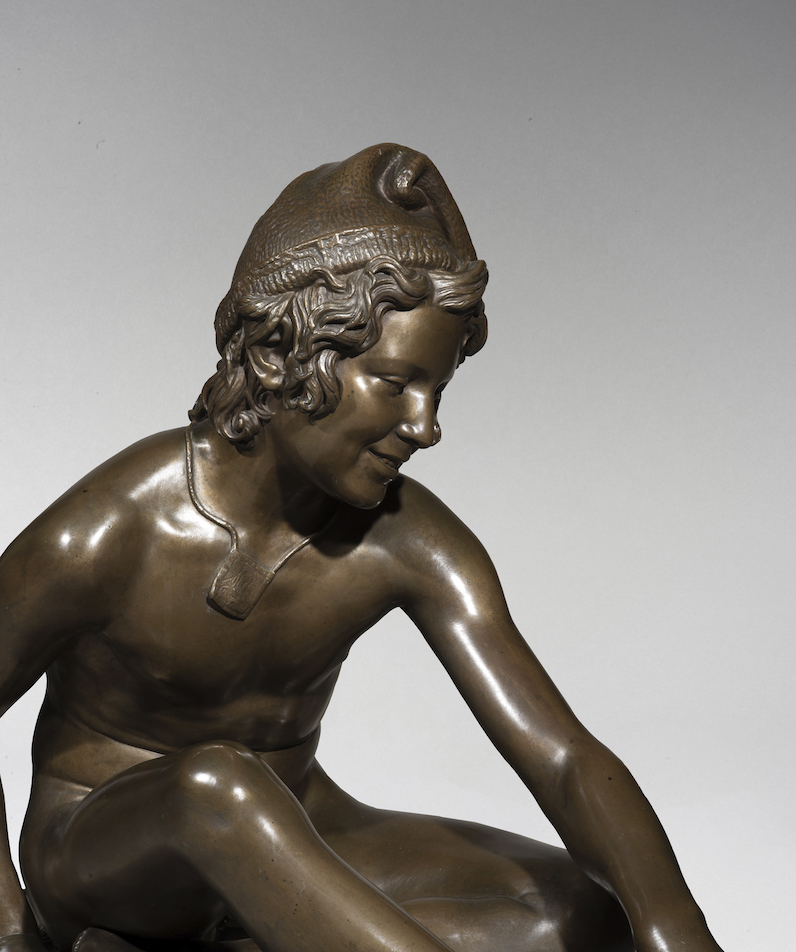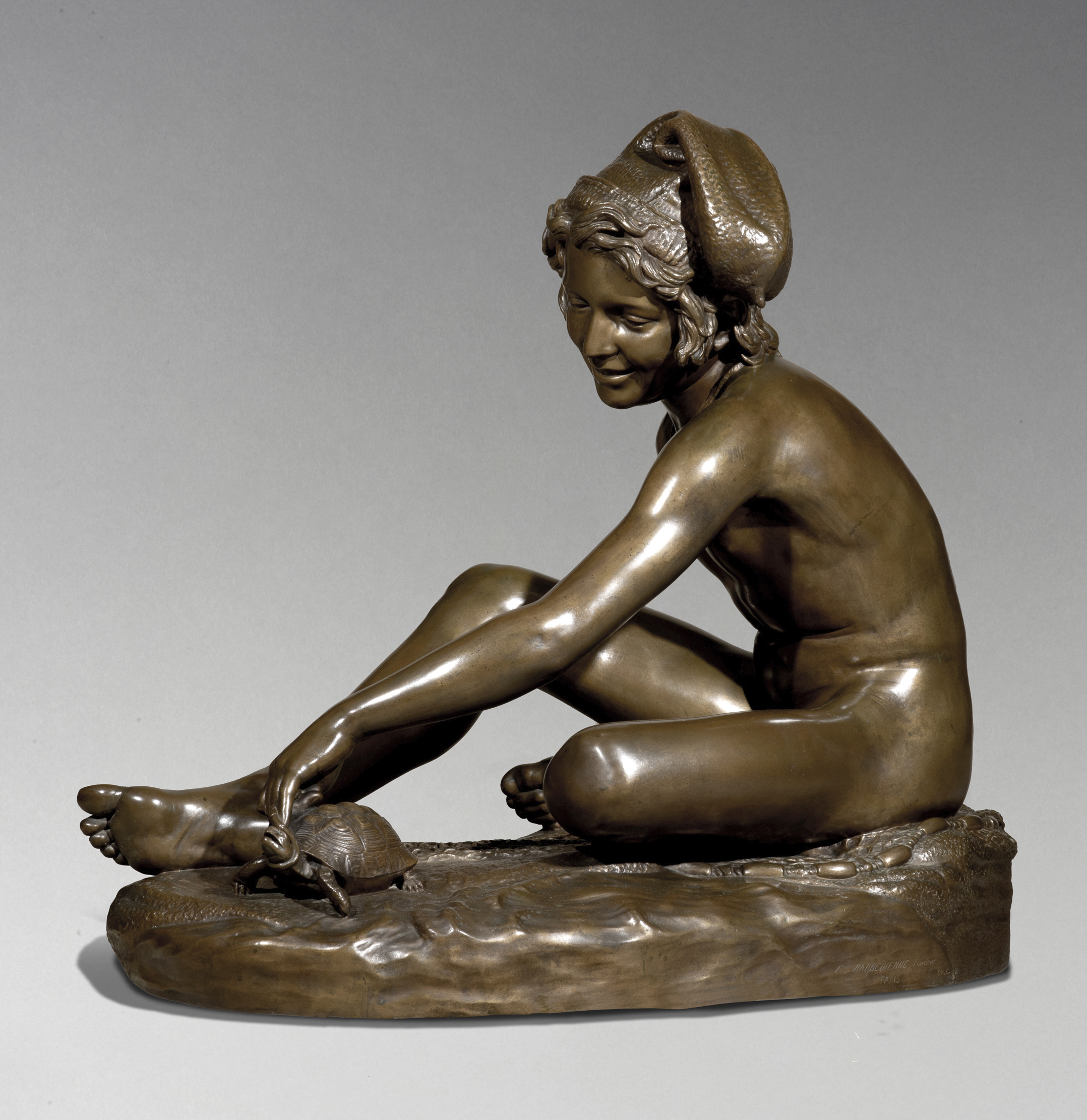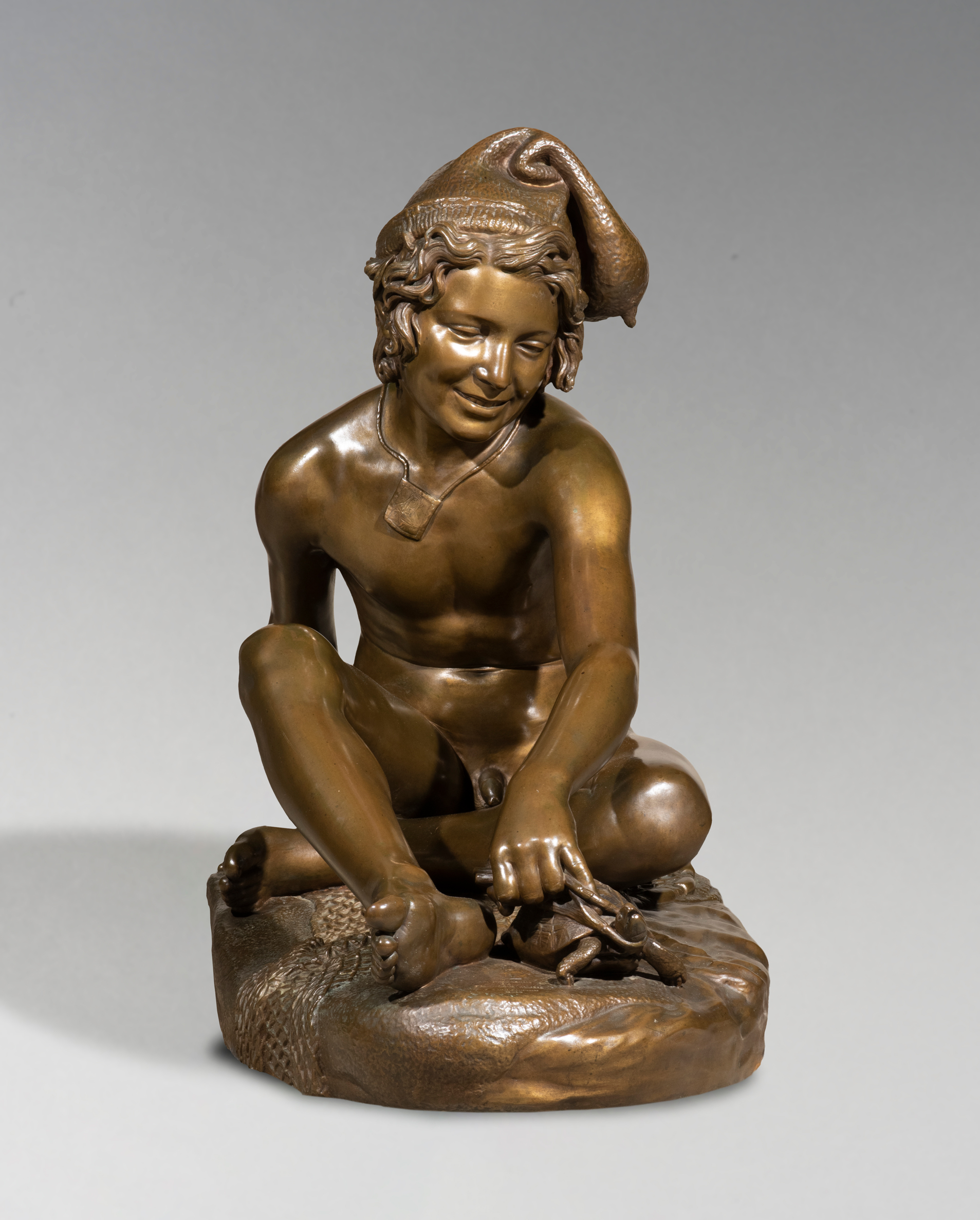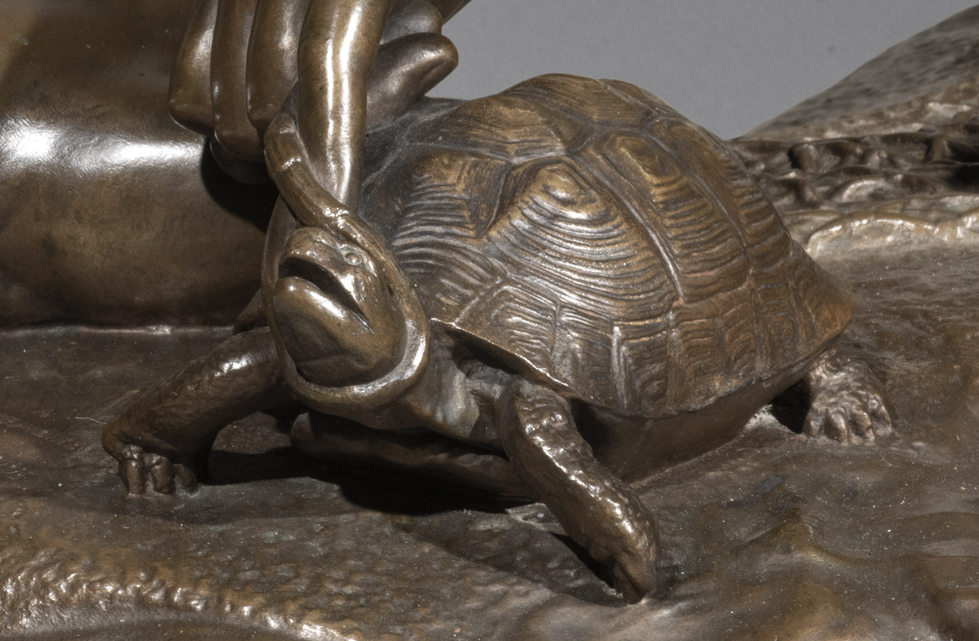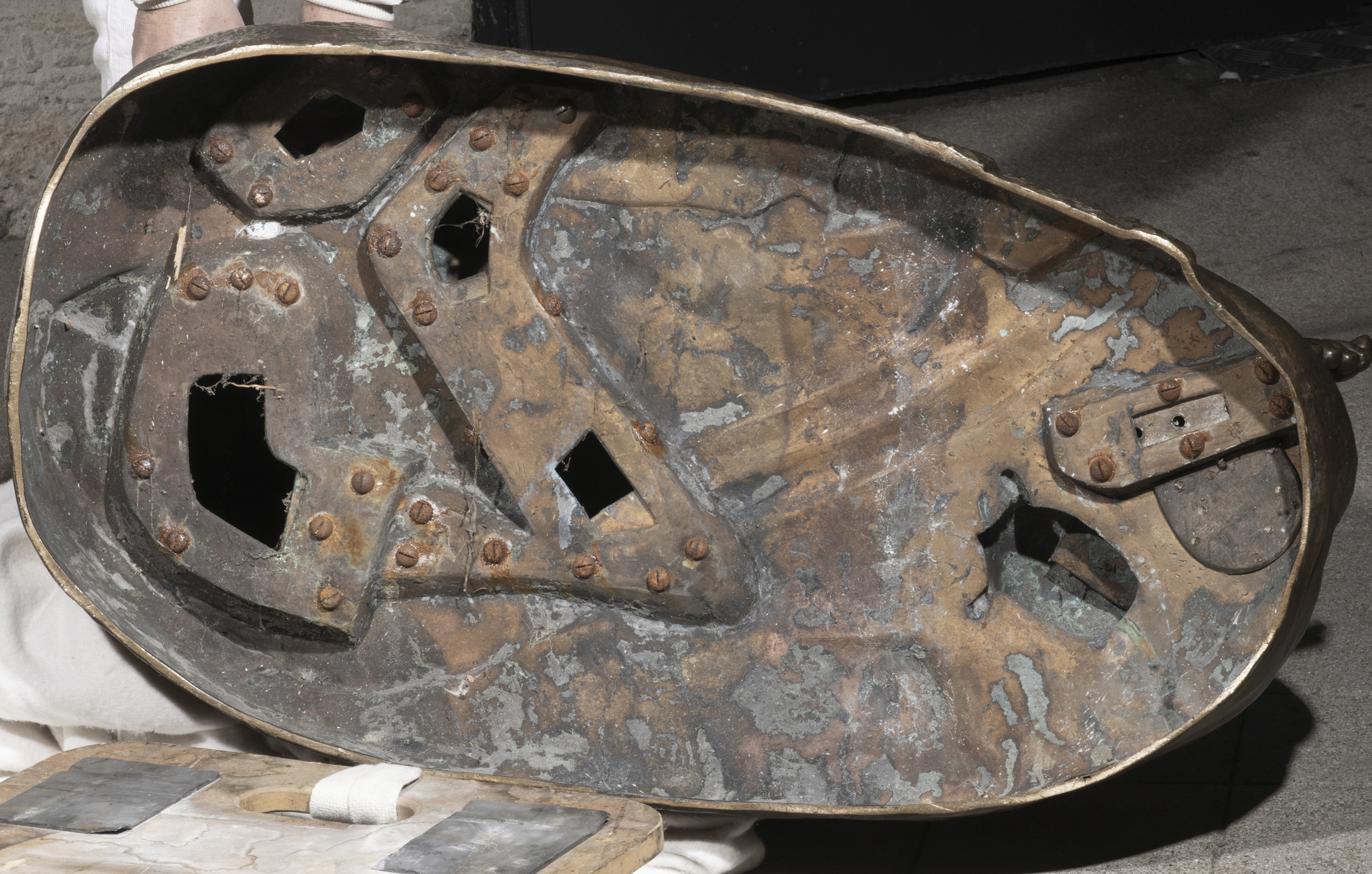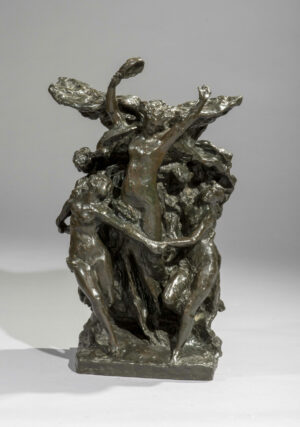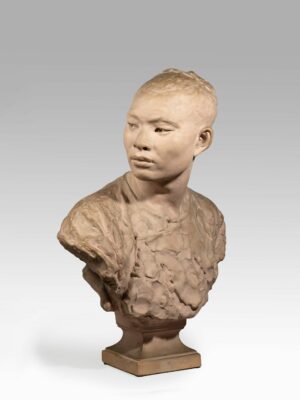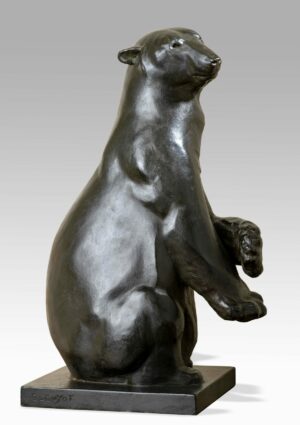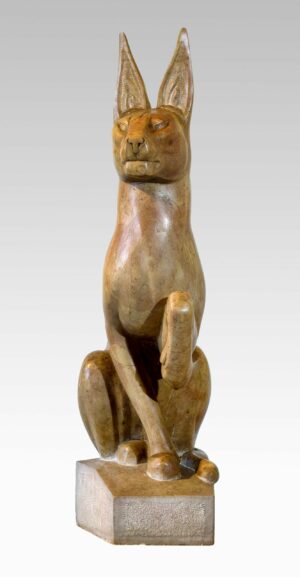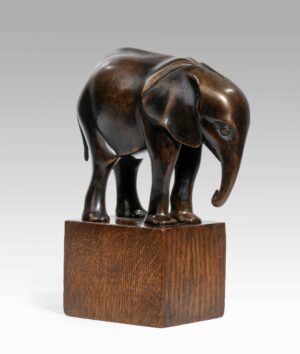Description
The Young Neapolitan Fisherman playing with a turtle, held on a bulrush leash, caused a sensation when exhibited at the 1833 Salon. The critics noted the anatomical precision and naturalness of the boy with his fresh and naive expression, changing the view on antique art. Opposing the proponents of classicism to those of romanticism, this work which marked the picturesque movement in sculpture, shows how François Rude subtly renewed the classical tradition. While preserving the nudity dear to the ancient model, he transposed it into contemporary reality, which he interpreted using examples from the literature or painting of that period, having not yet been to Italy. His young fisherman, recognisable by his net and cap, is thus featured ‘as an emanation of the shepherds of Arcadia, pastoral figures often represented by neoclassical sculptors’. (op. cit. supra, p. 60)
However the freedom in the young boy’s graceful attitude, the picturesqueness of his playing, the lively expression of his laughing face with its common features, the realism of his felt cap and wet hair make the subject both quaint and modern, linking it more closely to the Romantic school by breaking away from the idealized classical beauty.
This artwork, destined to be a great success, was edited in bronze many times, first by the Maison Barbedienne, François Rude’s historical founder, with which he had entered a contract for the edition of this sculpture as early as 1843, and then by the Susse foundry from 1905 onwards.
The contract with Barbedienne merely concerned small-scale versions using the Collas process and did not apply to the edition of full-scale models. We do know, however, that there were two bronze versions of the full-scale model:
– the only one identified and located up to now was cast by Eck and Durant in 1858, probably at the request of the Rude family, to honour the artist’s memory after his death in 1855. It is now kept in the Dijon museum.
– the other was a cast by Barbedienne. Indeed, a letter dated May 16, 1887 (kept in the archives of the Rouen museum) attests that the Barbedienne foundry provided the lot No. 1 for a lottery, consisting of a copy of a life-sized bronze of the Fisherman with a turtle by Rude. In this letter, the winner of the prize offered to sell this bronze to the Dijon museum for 1500 francs, an offer which the museum did not take up. All trace of this bronze was subsequently lost. However, our bronze sculpture, is life-sized as the marble model exhibited in the Louvre Museum. Cast by the Barbedienne foundry, it is precisely dedicated and dated by Ferdinand Barbedienne ‘to the memory of François Rude, F. Barbedienne 18-83’.
It thus corresponds in all respects to the lost bronze of the lottery and is the only bronze copy of this model cast by Barbedienne to scale 1.
The François Rude specialist, Joseph Wassili, whom we thank for all the valuable information he has given us on this work, indicated that he does not know of any other copy of this format.
Our sculpture is therefore a work of great rarity and its discovery is exceptional.

